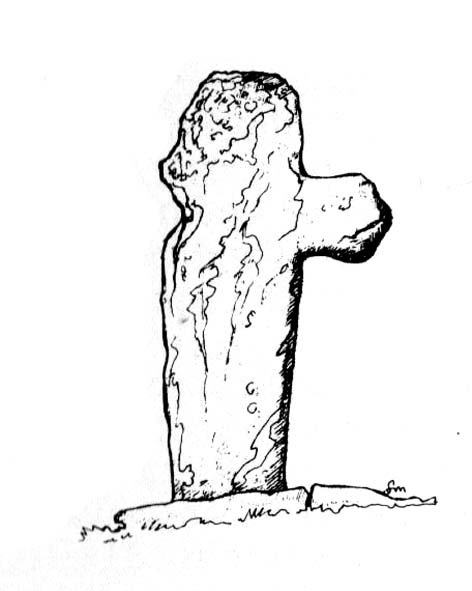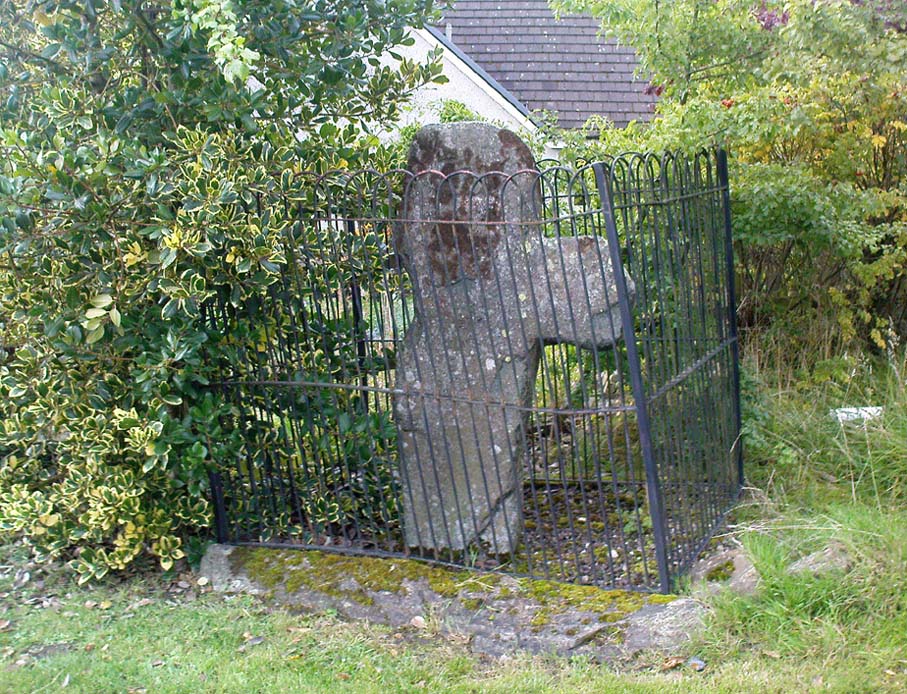Cross: OS Grid Reference – NN 80710 49136
Also Known as:
- Cross of Dull

From Aberfeldy, take the B846 road over the river bridge, past Weem, a couple of miles down the valley until you see the small road on the right which leads up to the ancient hamlet of Dull. Go up and round the corner until you reach the centre of the village; and here the road turns back downhill. At this point, right by the roadside, entrapped within old railings, you’ll see the Cross of Dull.
Archaeology & History

Standing more than three feet tall, the remains of this old cross with one of its extended arms broke off in previous centuries, was one of three such monuments that used to stand in the valley. This and its associates were, according to christian legend, placed as markers at an ancient centre of christian learning at Dull around the time of Adamnam (who died in Glen Lyon in 704 AD). The area was said to be an early druid college, which was later incorporated into early christian teachings. Hilary Wheater (1981) also told that in previous centuries, if anyone fell foul of the law,
“Within the boundaries of these crosses debtors, offenders or miscreants were protected from retribution. One of the crosses stands in the centre of Dull village to this day, having been used as a market cross in more recent times, and the other two, having been stolen for use as gateposts during the (19th) century, were placed in the old kirk at Weem for safety.”
References:
- Stuart, John, The Sculptured Stones of Scotland, Aberdeen 1856.
- Wheater, Hilary, Aberfeldy to Glenlyon, Appin Publications: Aberfeldy 1981.
© Paul Bennett, The Northern Antiquarian
The map could not be loaded. Please contact the site owner.
St Adamnan or Eunan was an Irish monk and missionary in Northumbria after 686 AD where he was successful in securing the release of Irish prisoners. In 697 at the Synod of Birr, Ireland, he managed to get Celtic monasteries to accept the first phase of the new calculation of Easter set out by the Roman church. He was famous for his work on the Life of St Columba – Adamnan himself was abbot of Iona, and with his “Law of Adamnan” was also successful in that which women, boys and clerics were forbade from going in to war.